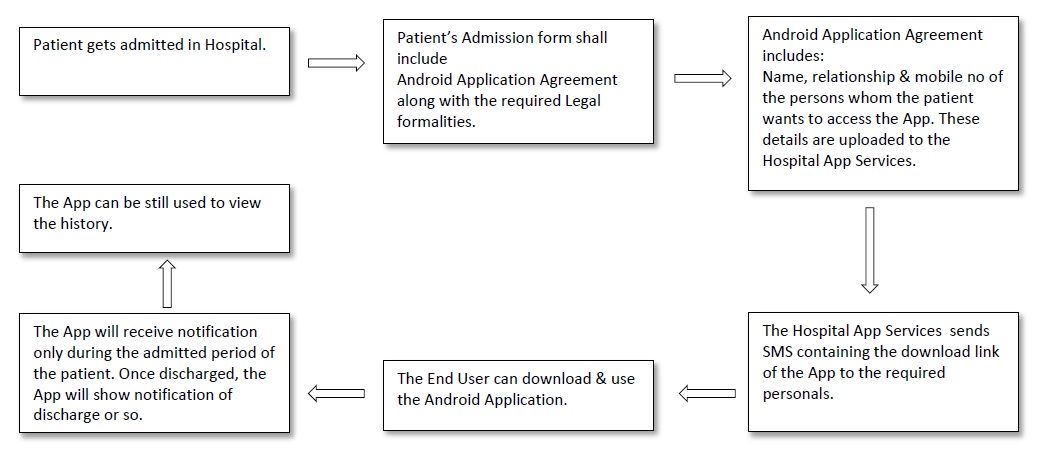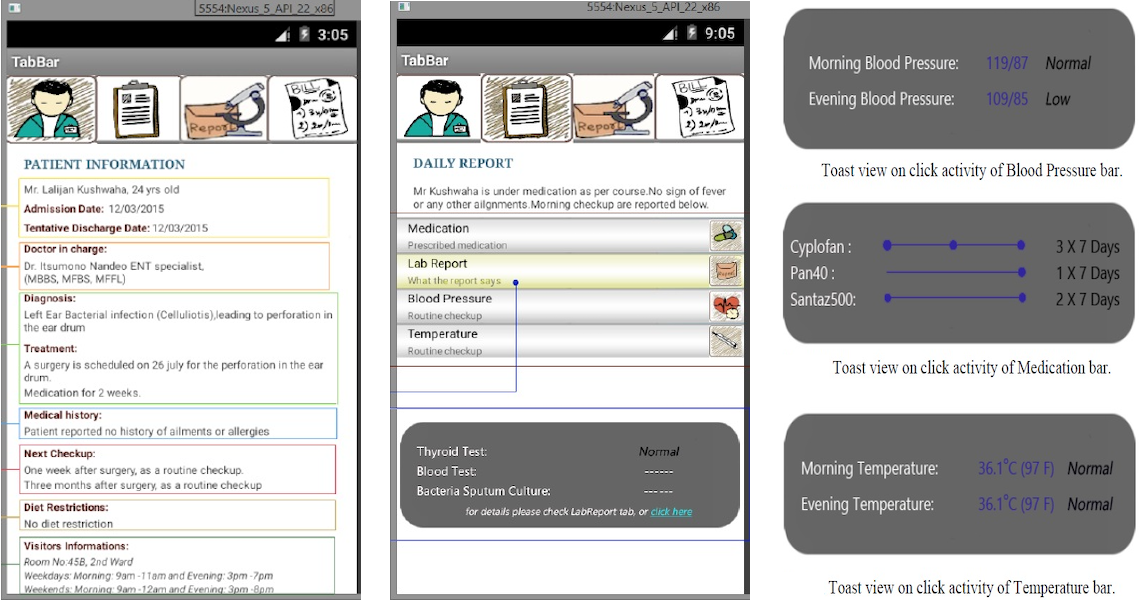Patient Trust App
Overview
Trust Building of Patients’ Relatives Through an Android App-Based Patient Information Tool
📅 Jun 2015 – Jul 2015
🏛️ Ergonomics Lab, IIT Guwahati, India
🎓 Supervised by Prof. Abhirup Chatterjee & Dr. Debkumar Chakrabarti
👥 Collaborator: Abhishek Gahatraj
🏆 Presented at HWWE 2015 (IIT Bombay), awarded 3rd Prize in the Springer-sponsored Young Researcher “Postgraduate” category
This project addressed trust deficits in Indian healthcare by designing a conceptual Android application that integrates with Hospital Information Systems (HIS) to provide real-time updates to patients’ relatives. The solution aimed to reduce conflicts stemming from communication gaps, as evidenced by frequent vandalism incidents reported in Indian media.
Core Objectives
- Understand information flow breakdowns between hospitals and patients’ relatives
- Build trust through transparency in patient care processes
- Implement a conceptual design solution as an Android mobile application
- Ensure usability for temporary users with minimal learning curve
- Incorporate cognitive design principles for clarity under stress

Overview of the app’s lifecycle architecture, including initialization, and interaction phases.
Methodology
- Conceptual Framework Design – Proposed two-component architecture:
- Hospital Services (HS): Backend module for HIS integration (separate database)
- End User (EU): Android app interface for relatives
- Technical Implementation:
- Developed prototype using Eclipse IDE with Android Development Toolkit
- Emulated on Nexus 5 API 22 via Intel HAXM
- Used Toast messages for information display
- Interface Design – Four key information modules:
- Patient Information: Admission details, diagnosis basics, medical history (opt-in)
- Daily Report: Nurse check-ups, lab results, medication
- Lab Report: Scheduled tests, downloadable PDF reports, test explanations
- Financial Details: Transparent billing breakdowns
- Cognitive Design Principles – Applied heuristics:
- Minimal visual noise (white background)
- Short sentences over figures
- Uniform UI patterns
- Priority-based information ordering

Emulator showing tabs ‘Patient Information’, ‘Daily Reports’ & ‘Medication Toast Messages’
Key Insights
- Trust erosion stems from information ambiguity not malice
- Structured updates (even via simple toast messages) reduce anxiety
- Financial transparency prevents post-discharge conflicts
- Cognitive load management is critical for stressed users:
“No time for memorizing” → Requires intuitive, consistent UI - Legal frameworks needed for sensitive cases (psychiatry, ICU, etc.)
Outcomes
- Conceptual framework for HIS-app integration
- Functional app prototype with 4 information modules
- Cognitive design guidelines for healthcare applications
- Award-winning presentation at HWWE 2015
- Proposed solutions for implementation barriers:
- Cost-effective HS component setup
- Legal frameworks for information sharing
- Unique ID integration for nationwide scaling
Future Directions
- Pilot implementation with hospital partners
- Develop privacy and consent protocols
- Usability testing with heuristic evaluation
- Medical records sharing across hospitals
- Extend to government/rural healthcare settings
- Unique ID integration for nationwide access
A cognitive science-informed solution addressing communication gaps that fuel healthcare conflicts in India.
Key References
-
Acharyulu, G. V. (2012) Assessment of Hospital Information System Quality in Multi-Specialty Hospitals. International Journal of Innovation Management and Technology, 3(4), 349-352.
-
Mehdipour, Y., & Zerehkafi, H. (2013). Hospital Information System (HIS): At a Glance. Asian Journal of Computer and Information Systems, 1(2).
-
Kumar, A., & Gomes, L. (2006). A study of the hospital information system (HIS) in the medical records department of a tertiary teaching hospital. Journal of the Academy of Hospital Administration, 18(1), 1–12.
Collaboration Opportunities
Open to collaboration or discussion on behavioral insights or technical specs. Happy to exchange ideas and explore new perspectives.